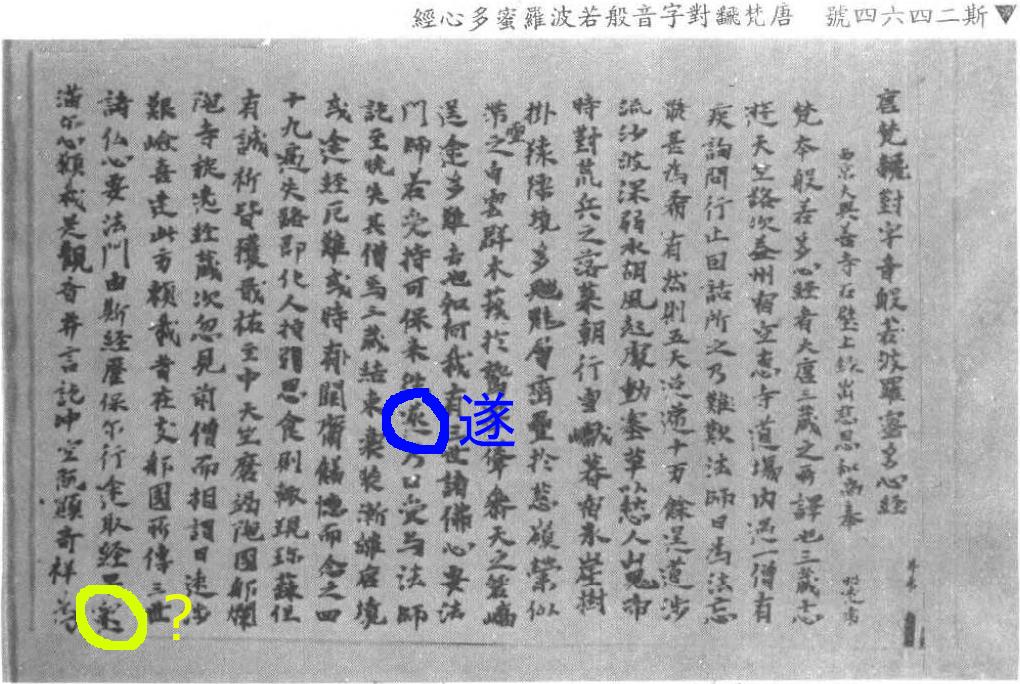I don't care about pronunciation, what would it mean?
This is not the right idea. Chinese characters represent words, and words have both sound and meaning. If you knew what the pronunciation is, you would be over halfway to finding out the word the character represented, and hence knowing its meaning.
Existing studies offer little in the way of interpreting that character's meaning, but at least two academic publications offer the components as 「⿺眾辶」 or 「⿺衆辶」 (Siu 2017 p.12; 張靜二 1985 p. 253), making up a character which looks like 「𨖼」. II’ll maintain that writing the character with 「血/(豕-一)」 is a transcription error, as there was no known widespread component 「血/(豕-一)」 used in other characters, and certainly not any which has a direct relation to the meaning or sound of the words used in the heart sutra.
If you really wanted to get to the bottom of this, rather than look at the printed transcription, make a trip to the British Museum's "Exploring the Silk Roads" exhibition and take some high-resolution clear photos at their Stein collection. Here's some images of original excerpts as excavated from Dūnhuáng, all taken from Volume 19 of 黃永武《敦煌寳藏》. The yellow circle contains the character you're after (。。。取經早「?」,滿爾心願。。。), while the blue circles and indicated characters are some examples that you should expect similarities or differences to.
《唐梵飜對字音般若波羅蜜多心經》
Stein no. 2464 (《敦煌寳藏》019, p.687-688)
。。。師若受持,可保來往。「遂」乃口受與法師訖。。。
If the unknown character contains the strokes of 「豕」, it should highly resemble 「遂」 from the same writer.
《佛相好經》
Stein no. 2461 (《敦煌寳藏》019, p.633-634)
This is unlikely to have the same penmanship as Stein no. 2464, but it should be written around the same era.
。。。出五色光明,「還」入毛孔。。。
。。。其舌下十脈「衆」光流出。。。


